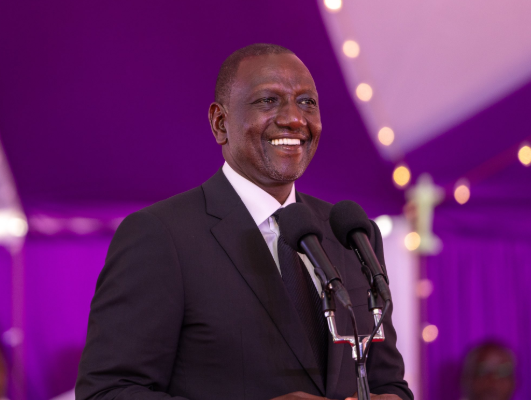Ruto’s scorecard masks deeper challenges
By Alberto Leny, January 14, 2025As he edges closer to the halfway stage of his first term, President William Ruto faces critical national challenges that his administration needs to address urgently.
After reaching out to his fierce opponents to form a mongrel government, Ruto must deal with two inter-related issues – one linked to the Constitution and the other political – and that in turn are connected to economic and development policies.
First, the constitutional dilemma posed by the delayed reconstitution of the Independent Electoral and Boundaries Commission (IEBC) raises fundamental questions about electoral justice and preparedness for the 2027 elections, with many unresolved issues.
Ruto won the contentious 2022 presidential election with a razor-thin majority of 200,000 votes against his rival, Opposition luminary Raila Odinga.
IEBC was at the centre of the controversy when four of seven commissioners challenged the chairman’s declaration of the winner. Although the Supreme Court dismissed Raila’s petition, the IEBC conundrum remains a big question mark.
Immediately after his contentious win was ratified, Ruto immediately began consolidating power around his presidency. He first lured independent elected MPs and some fence-sitting members of the Azimio la Umoja coalition to his Kenya Kwanza.
He secured a parliamentary majority in both the National Assembly and the Senate. This meant that his wishes, even unpopular policies such as the finance bills of 2023 and 2024 were hurriedly passed in Parliament.
What was meant to be the legislative House had been transformed into a rubber-stamp of Executive fiat against rising public uproar. Indeed, the current Parliament has been described as the weakest in history since the advent of multiparty politics in terms of its legislative, oversight, and representation obligations to the citizenry.
Second, Ruto jammed his Cabinet with loyalists and individuals with questionable credentials. Inevitably, public discontent against these moves reached boiling point as Raila-led protests in early 2023 rocked the political establishment and the national economy.
As Ruto insisted on cementing these unpopular policies with the help of a compliant Parliament, disgruntled wananchi, exercising the constitutional rights through the provision of public participation in the decisions directly affecting them, continued to express their opposition.
The country exploded in mid-2024 when Gen Z protests seized on huge public discontent to rattle and humble Ruto to withdraw the condemned Finance Bill, 2024. Parliament bore the brunt of protesters’ wrath, with an unprecedented breach of its grounds.
Realising the danger that the continued protests could deal a fatal blow to his administration, he was forced into political engineering to salvage his two-year-old administration.
By crafting a deal with erstwhile rival Raila that saw his allies drafted into the reshuffled Cabinet, he cooled down popular protests that exacted a toll on national cohesion and a weary economy.
The exercise has since continued with the adoption of his avowed critic, former President Uhuru Kenyatta’s insiders. The government shakeup is extending to principal secretaries and other State appointments.
However, this political engineering appears more a case of recycling old wine in new skin, rather than addressing public discontent and the issues raised by the Gen Z protests.
So, as he enters the second half of his term amid uncertainties with a hitherto unheralded rejigged government, Ruto must therefore deal with simmering national issues.
These are youth alienation, authoritarianism, injustices, human rights violations, the burden of taxation on the majority, and perceived lack of transparency and accountability in governance.
— The writer comments on national affairs; albertoleny@gmail.com
More Articles

